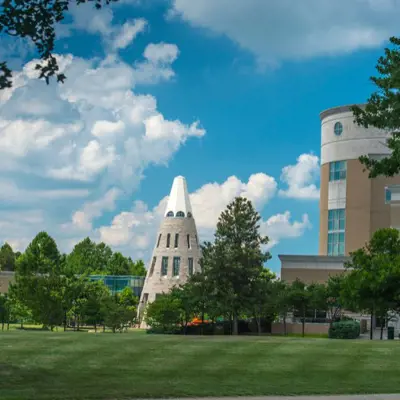
Student Media Advisory Board implements changes to better serve students
June 18, 2024
Earlier this summer, several USI student media outlets announced new leadership appointments. But that’s not the only change for the organizations. The Student Media Advisory Board—which establishes criteria for the creation, operation and distribution of all University-sanctioned student media, as well as other topics concerning student media—has gone through a refresh of its own, including its new name, revised from the former Student Publications Committee.
Dr. Leigh Anne Howard, Communication and Media Department Chair and Professor of Communication Studies, is Chair of the Board and explains how the refresh has expanded the Board’s mission to be more inclusive and supportive of all student media. In the past, the committee met only once a year and was focused primarily on The Shield. “We looked at policies from a number of other institutions-- top media schools to see what they were doing to support student media,” she says. “Then, we wrote a new description for our Board and a set of policies that would help us provide timely, consistent support to our student media.”
Currently, USI student media organizations include The Shield (print and digital news publication), 95.7 The Spin (FM and streaming radio), FishHook (art and literary journal) and Candid (biannual magazine focusing on art, fashion and editorial), and the Streaming Eagles Studio/Access USI (weekly news, sports and music television/streaming production). As editorially independent media, students choose what topics to cover and what stories to tell in their respective outlets without approval from the University. It also means the Student Media Advisory Board members have a duty to recognize, support and defend that independence, says Howard.
She explains each student media is different; they operate in various timeframes and have different content and platforms, but they do have some similarities in terms of their organizational structures and the need to provide content relevant to the University community. USI student media organizations also operate in a way consistent with journalistic principles and codes of ethics.
Each student media has a faculty advisor and a student who serves as the primary student media head for that organization. Selected by the Board, Howard explains this student will work closely with the faculty advisor to identify other student staff members and set the direction of the media outlet. In May, three of the student media organizations announced leadership appointments for the 2024-25 academic year. These leaders were chosen after an application and interview process with candidates.
The Board has also provided support to faculty advisors to clarify their duties. These advisors are responsible for the day-to-day operations of the student media, training students and providing routine critiques of published or produced work to ensure high-quality work.
An important aspect of the restructuring is to involve students more in the Board to ensure their representation. “There have always been three student representatives to the Student Media Advisory Board, as well as faculty, administrators and advisors," says Howard. "But often the students appointed haven’t shown up to meetings so we have frequently missed the student voice at Board meetings. Going forward, student media heads will still serve as non-voting members of the Board. Each outlet will also nominate one voting student member to represent them on the Board, although that person cannot be in a student media leadership position.”
With these changes, the Board now includes double the student members, who will actively participate and provide input, with five of those students having voting power on Board decisions.
The final structural change made to the Student Media Advisory Board is bringing in media professionals from the community to serve. These professionals will feature various backgrounds in media that reflect the types of student media on campus, such as journalism, creative writing, radio broadcasting and other related fields. Meeting virtually gives the Board the ability to call on professionals from Evansville and beyond. Advisory Board members have already been in contact with USI alumni in media professions about serving.
With these changes in places, the Student Media Advisory Board includes the Chair of the Department of Communication and Media (Board Chair), the Dean of the College of Liberal Arts, an administrator from Student Affairs, an administrator from University Marketing and Communication, three faculty members, two media professionals from outside the University community (with one being a USI graduate), one voting student representative from each University-sanctioned student media organizations (who is not a part of the leadership team) and non-voting members of faculty advisors and student editors/managers for all University student media outlets.
A key aspect of the Board changes will be education, as many in the University community—including students in the media outlets—aren’t quite sure what the duties of the Board are. Beginning in the Fall, Howard plans to meet with the student media groups to introduce herself but also introduce the students to the Board and its mission.
“What we’re really looking to do with these updates is take into consideration all student media on campus and to be as inclusive as possible to get that student voice,” Howard says. “We want to do what we can to offer support to the students in these organizations.”
To learn more about the Student Media Advisory Board, visit USI.edu/faculty-senate/university-advisory-councils-and-committees.